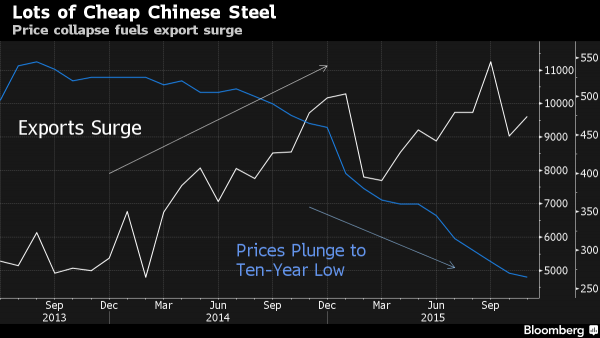When looking back in history, December 23, 2015 may be the date the global trade wars officially began. On that day, as we reported at the time, the U.S. imposed a 256% tariff on Chinese steel imports.
It did so perhaps with good reason: with its local end markets mothballed, China was desperate to dump as much excess capacity as possible offshore with shipments of steel, oil products and aluminum all reaching new highs according to trade data from the General Administration of Customs, and the result was a dramatic drop in US prices.

On the other hand, with Chinese mills, smelters and refiners all producing far more than can be purchased domestically amid slowing domestic demand, as well as the government’s anti-pollution crackdown, China’s decision to ship the excess overseas was also understandable.
As Bloomberg wrote at the time, “the flood of Chinese supplies is roiling manufacturers around the world and exacerbating trade frictions. The steel market is being overwhelmed with metal from China’s government-owned and state-supported producers, a collection of industry associations have said. The nine groups, including Eurofer and the American Iron and Steel Institute, said there is almost 700 million tons of excess capacity around the world, with the Asian nation contributing as much as 425 million tons.”
2016 was expected to get even worse: Colin Hamilton, head of commodities research, said the the price of hot-rolled coil, used in everything from fridges to freight containers, may decline about 13 percent next year. China’s steel exports, which have ballooned to more than 100 million metric tons this year, may stay at those levels for the rest of the decade as infrastructure and construction demand continues to falter.
To be sure, it was India who launched the first shot, when it announced that it plans to step up its protection for debt-laden domestic steelmakers by imposing a minimum price on steel imports among other measures, Steel Secretary Aruna Sundararajan said in December. The import curbs are necessary to ensure a “level-playing field” for Indian companies after restrictions imposed in September failed to stop a decline in prices, she said.











Leave A Comment